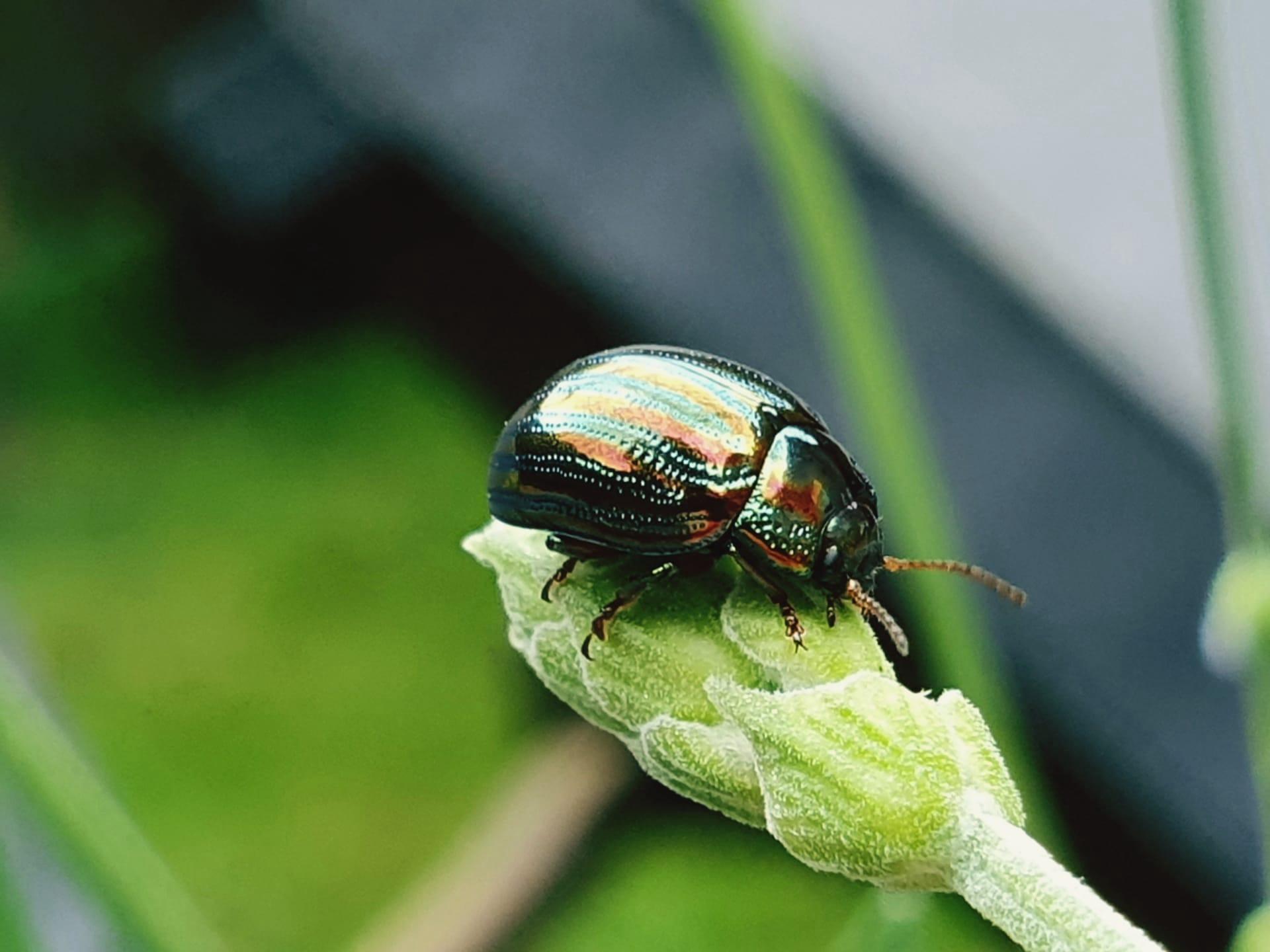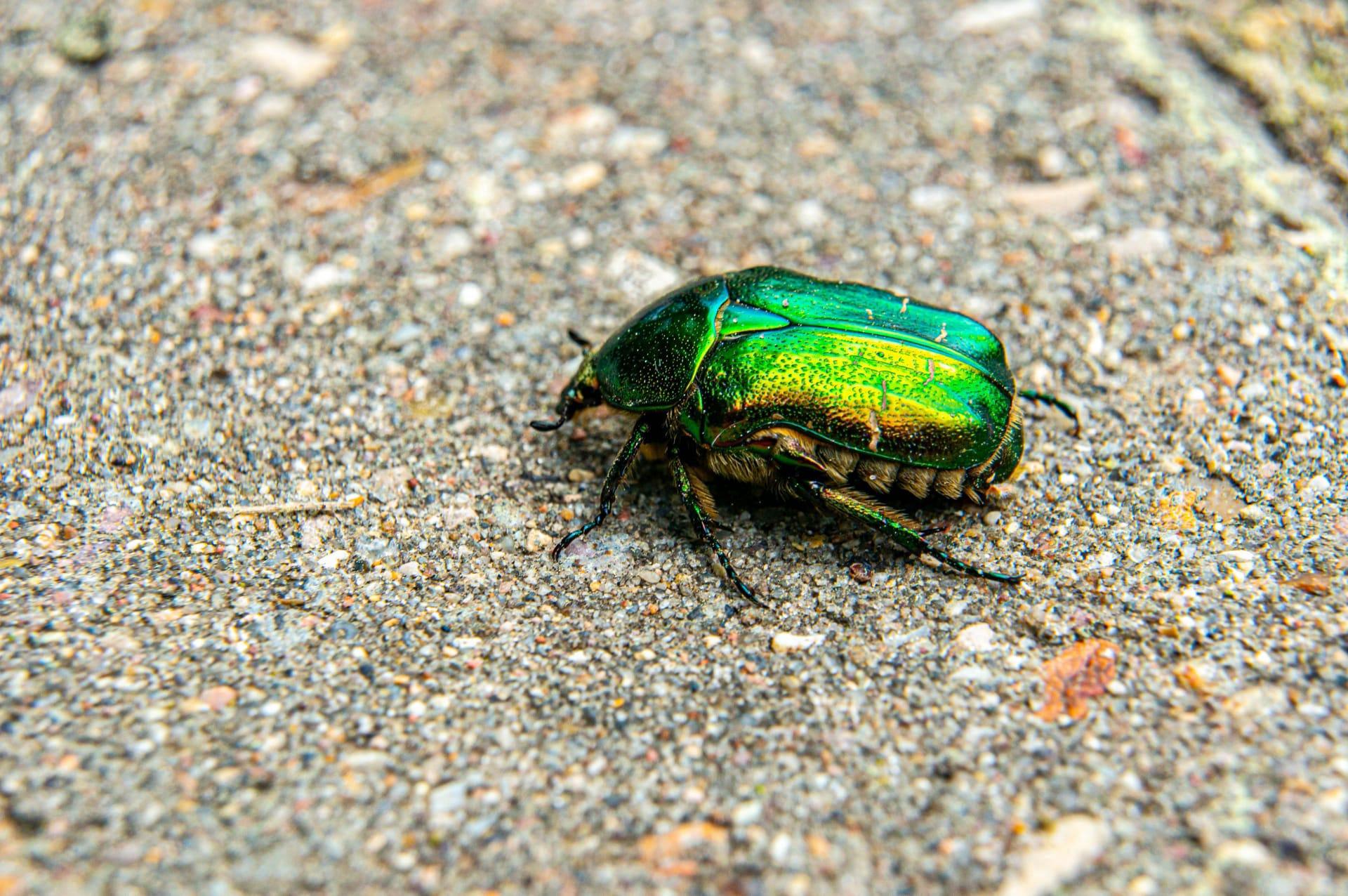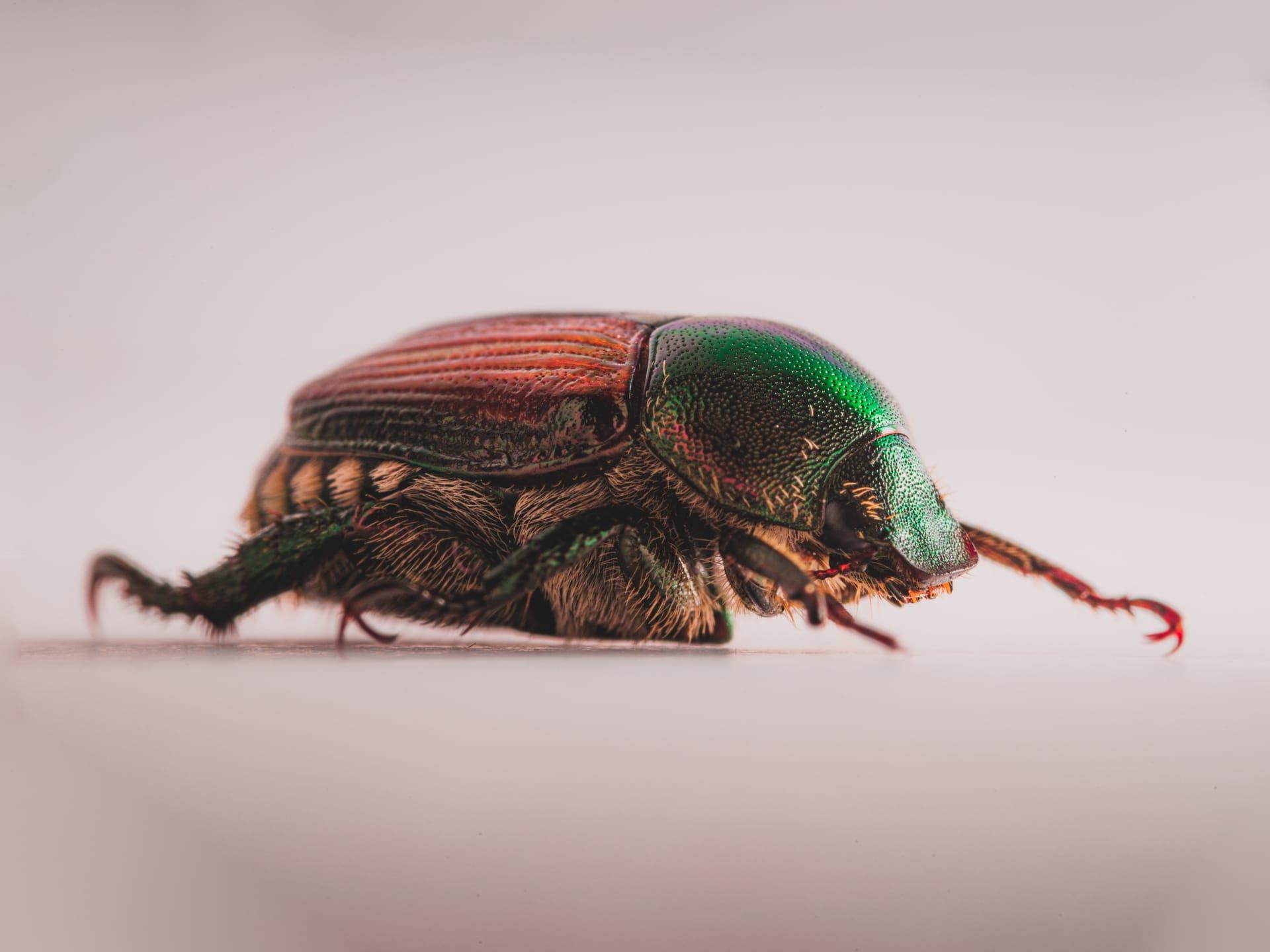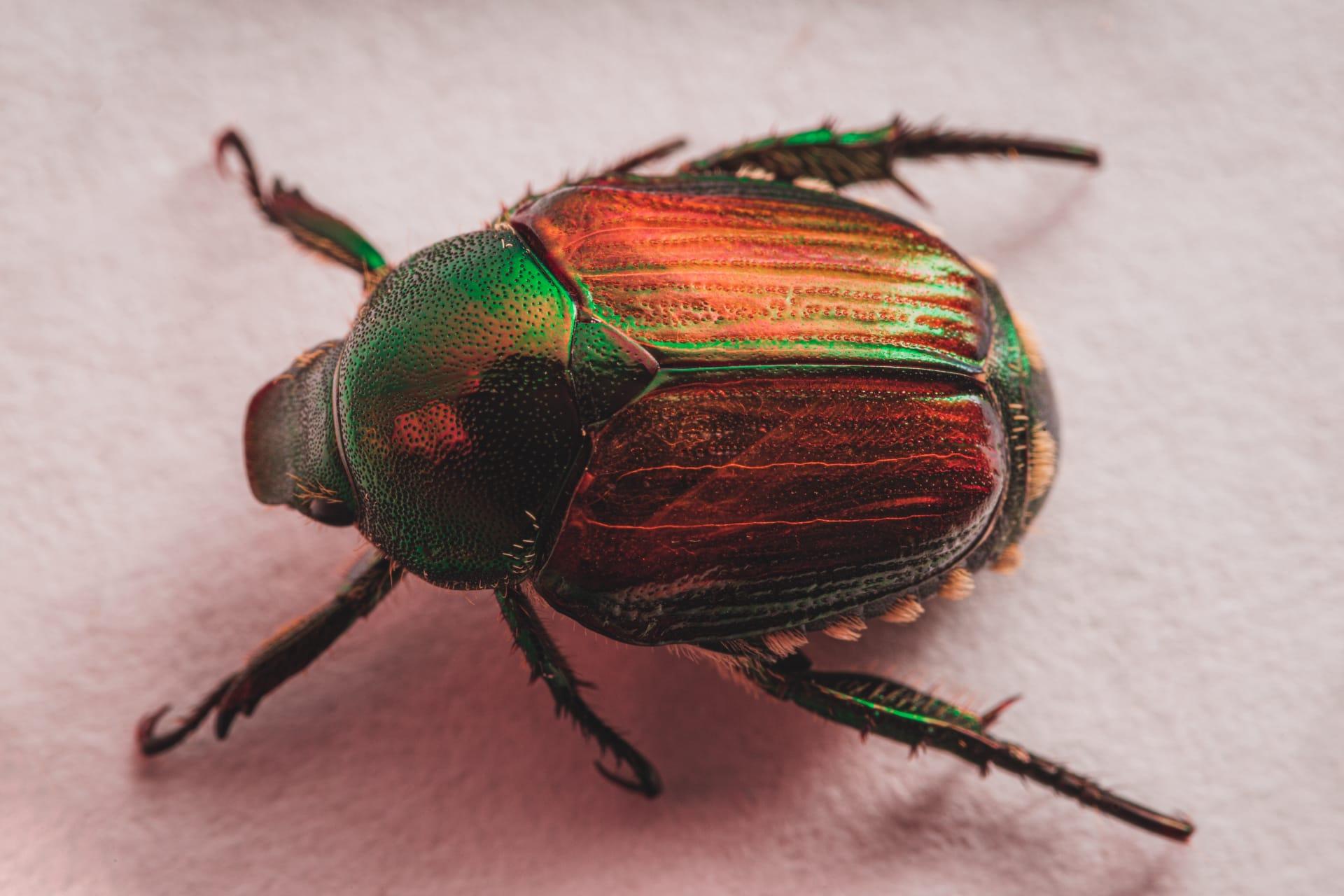Japanese Beetle Trivia
- Home /
- Trivia Question /
- Animal /
- Japanese Beetle Trivia
1
Question: What distinguishes the Japanese Beetle from other beetles in appearance?
Answer: The Japanese Beetle, scientifically named Popillia japonica, is notably recognized by its metallic green body and copper-colored wings. It measures about 0.6 inches (1.5 cm) in length. Its small white hairs along the sides and rear of its abdomen add to its distinctive appearance.
Question: How do Japanese Beetles affect the ecosystem?
Answer: Japanese Beetles are known for their voracious appetite for over 300 plant species. They can significantly damage crops and ornamental plants, leading to economic losses. Their feeding frenzy not only impacts plant health but can also alter the local ecosystem by reducing the availability of certain plant species.

2
Question: Is it true that Japanese Beetles are native to North America?
Answer: No, this is a common misconception. Japanese Beetles are actually native to Japan. They were first found in the United States in New Jersey in 1916, likely introduced through imported plants. Since then, they've spread to many parts of North America.
Question: Do Japanese Beetles have any natural predators in North America?
Answer: In their native habitat in Japan, Japanese Beetles have natural predators, but in North America, they have fewer natural enemies. This lack of predators contributes to their rapid population growth and spread. However, birds, small mammals, and some insects like spiders and ants are known to feed on them, albeit not significantly controlling their population.

3
Question: What is the lifespan of a Japanese Beetle?
Answer: The lifespan of a Japanese Beetle is relatively short. Adults typically live for about 30 to 45 days during the summer months. However, their lifecycle, from egg to adult, spans about a year, with most of their life spent as grubs underground.
Question: How do Japanese Beetles reproduce?
Answer: Female Japanese Beetles lay eggs in the soil during summer. Each female can lay around 40 to 60 eggs over her lifetime. These eggs hatch into grubs, which live underground and feed on plant roots, particularly grass, before emerging as adults the following summer.

4
Question: What methods are effective in controlling Japanese Beetle populations?
Answer: Control methods include hand-picking, trapping, and applying chemical or biological insecticides. Biological controls like the use of parasitic nematodes have shown effectiveness. It's important to note that chemical controls can have unintended effects on other species and the environment.
Question: Can Japanese Beetles fly and how far?
Answer: Yes, Japanese Beetles are capable flyers. They can fly approximately 5 miles, but they typically fly short distances of about a mile or less in search of food. Their flight abilities contribute to their spread and the challenge of controlling their population.

5
Question: Are Japanese Beetles active throughout the year?
Answer: Japanese Beetles are most active during warm months, typically from late June to August in North America. During the rest of the year, they are in larval or pupal stages underground, less visible and active.
Question: What kind of damage do Japanese Beetles cause to plants?
Answer: Japanese Beetles are known for their "skeletonizing" feeding pattern – they consume the leaf material between the veins, leaving a lacy, skeleton-like appearance. This can lead to significant defoliation, weakening plants, reducing crop yields, and in severe cases, killing young plants.